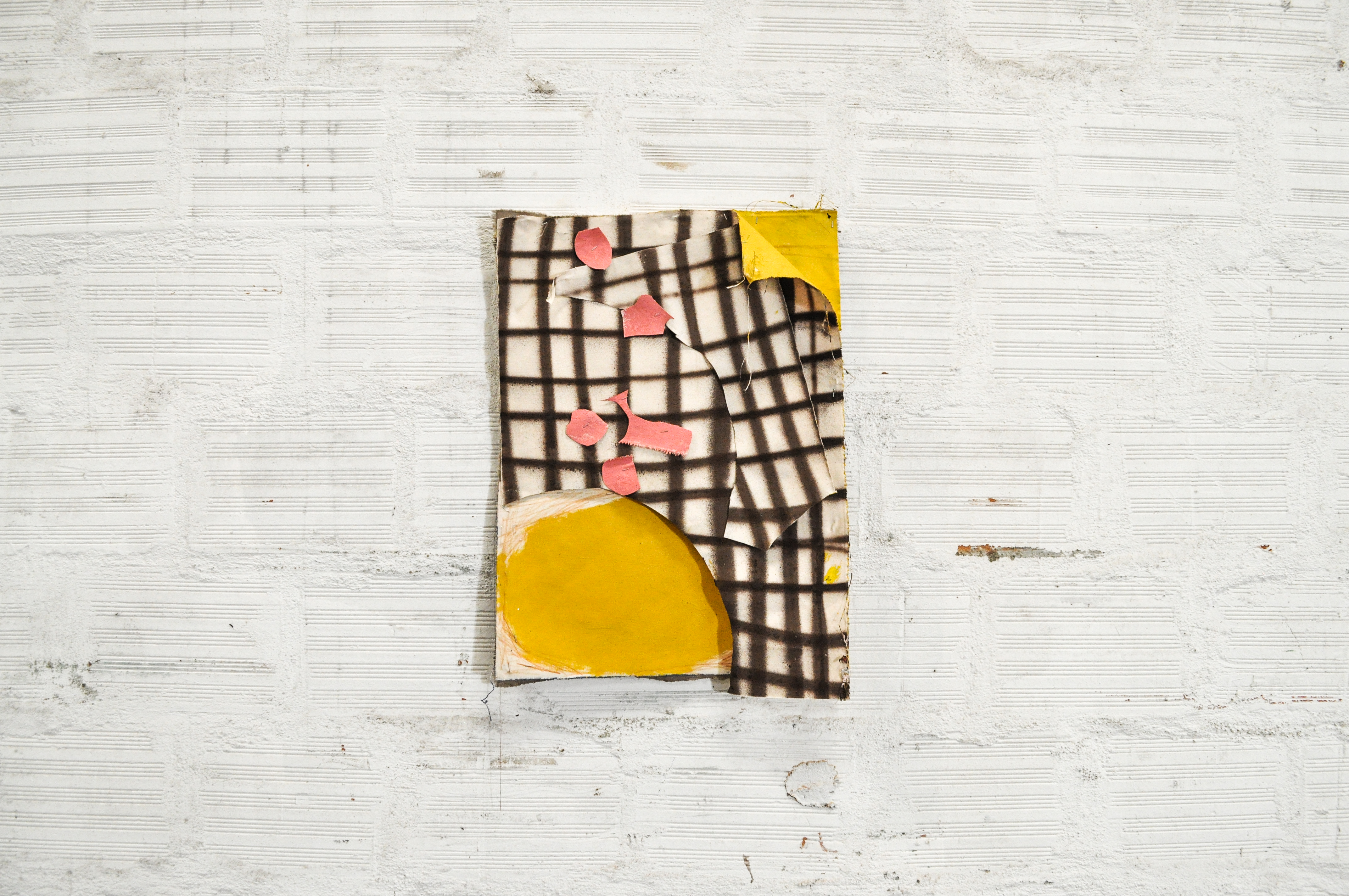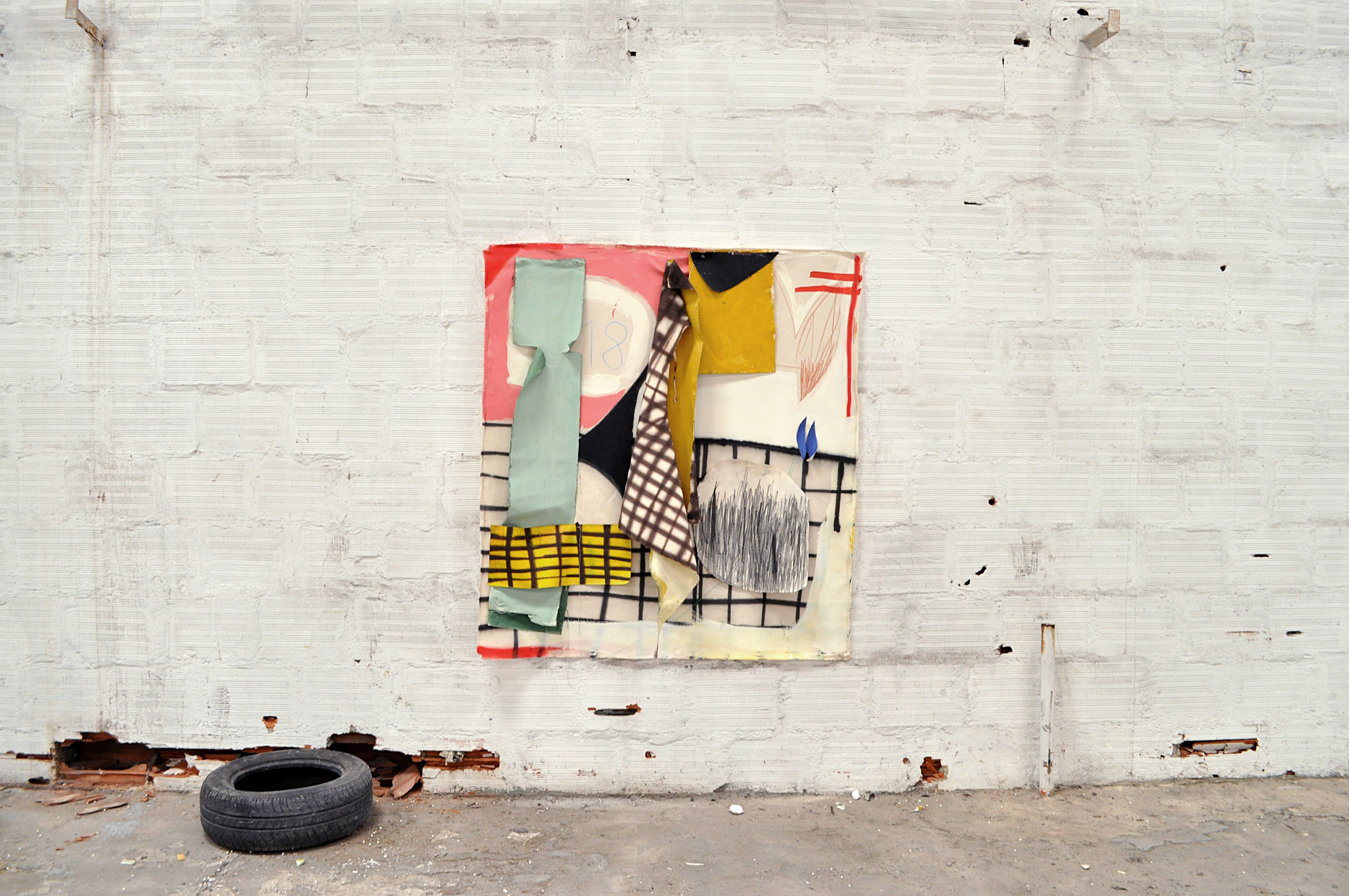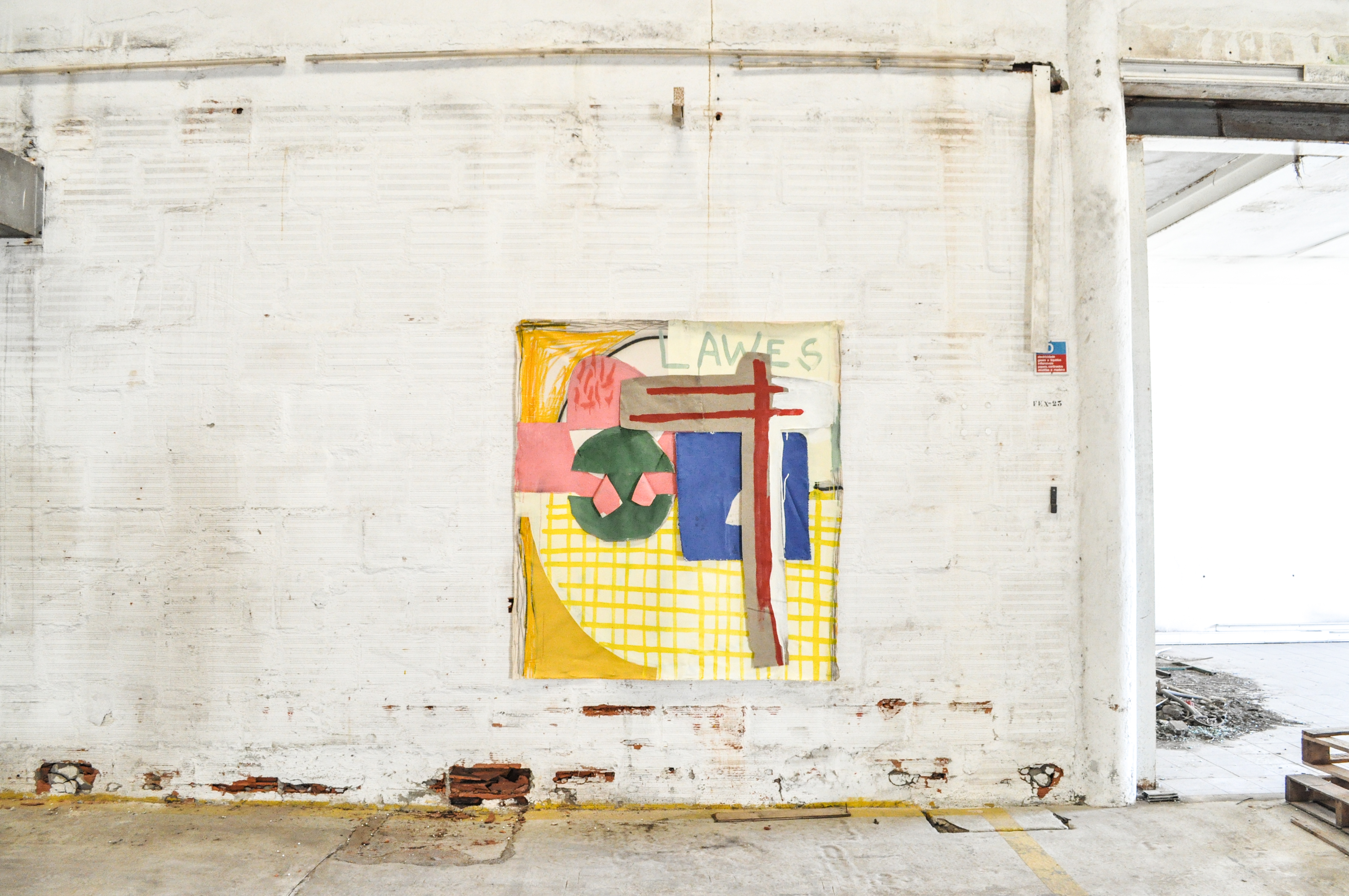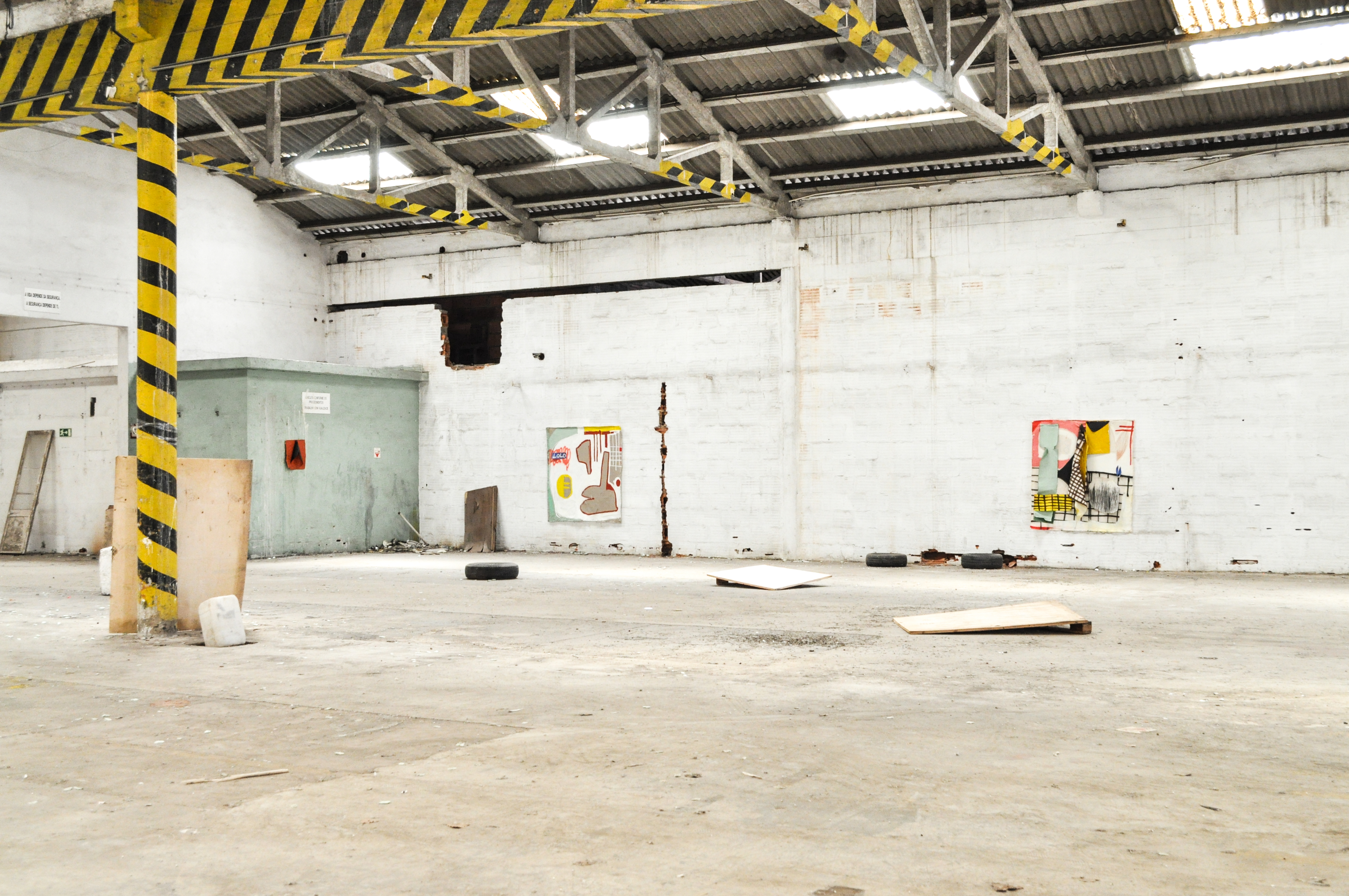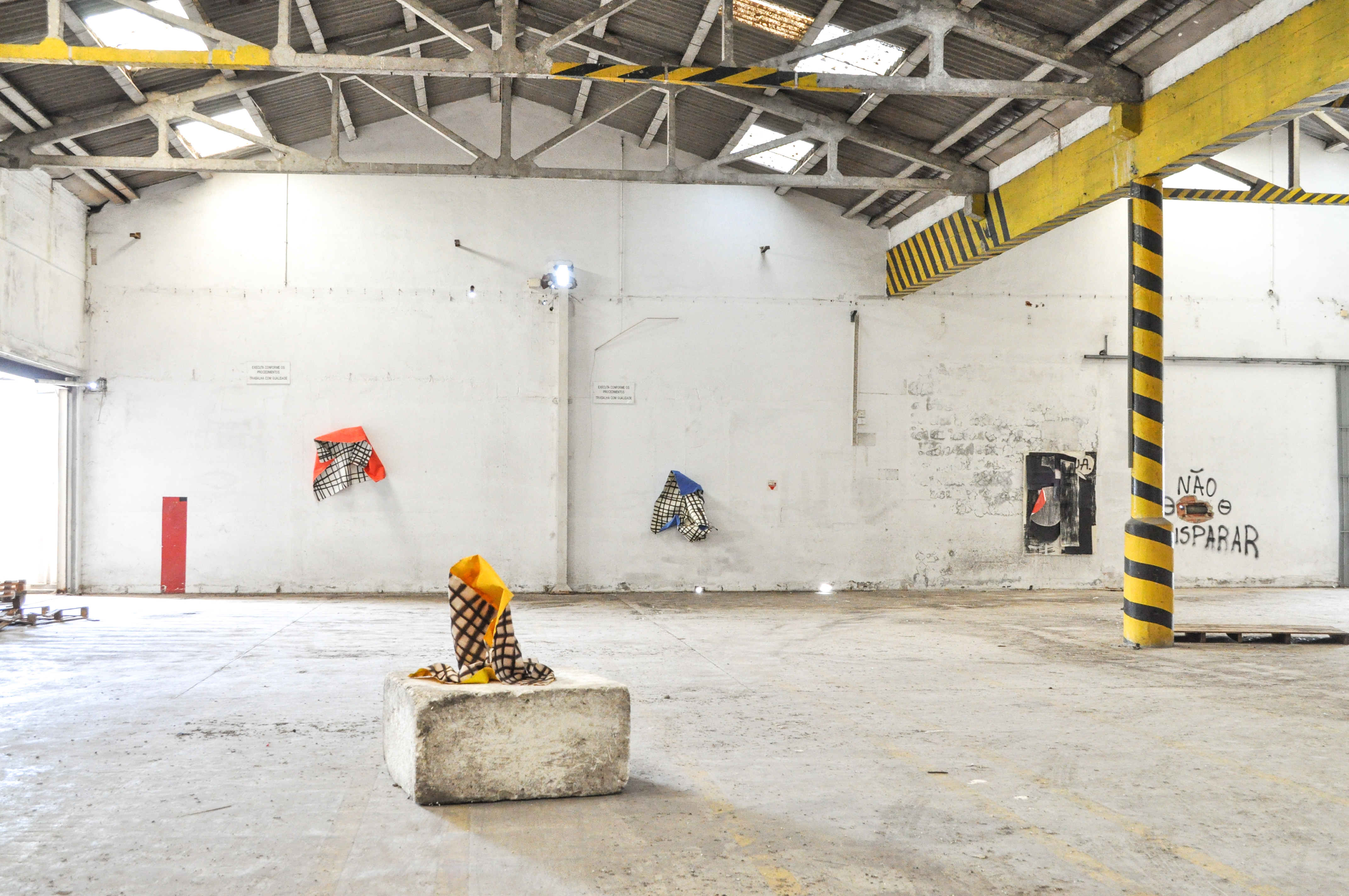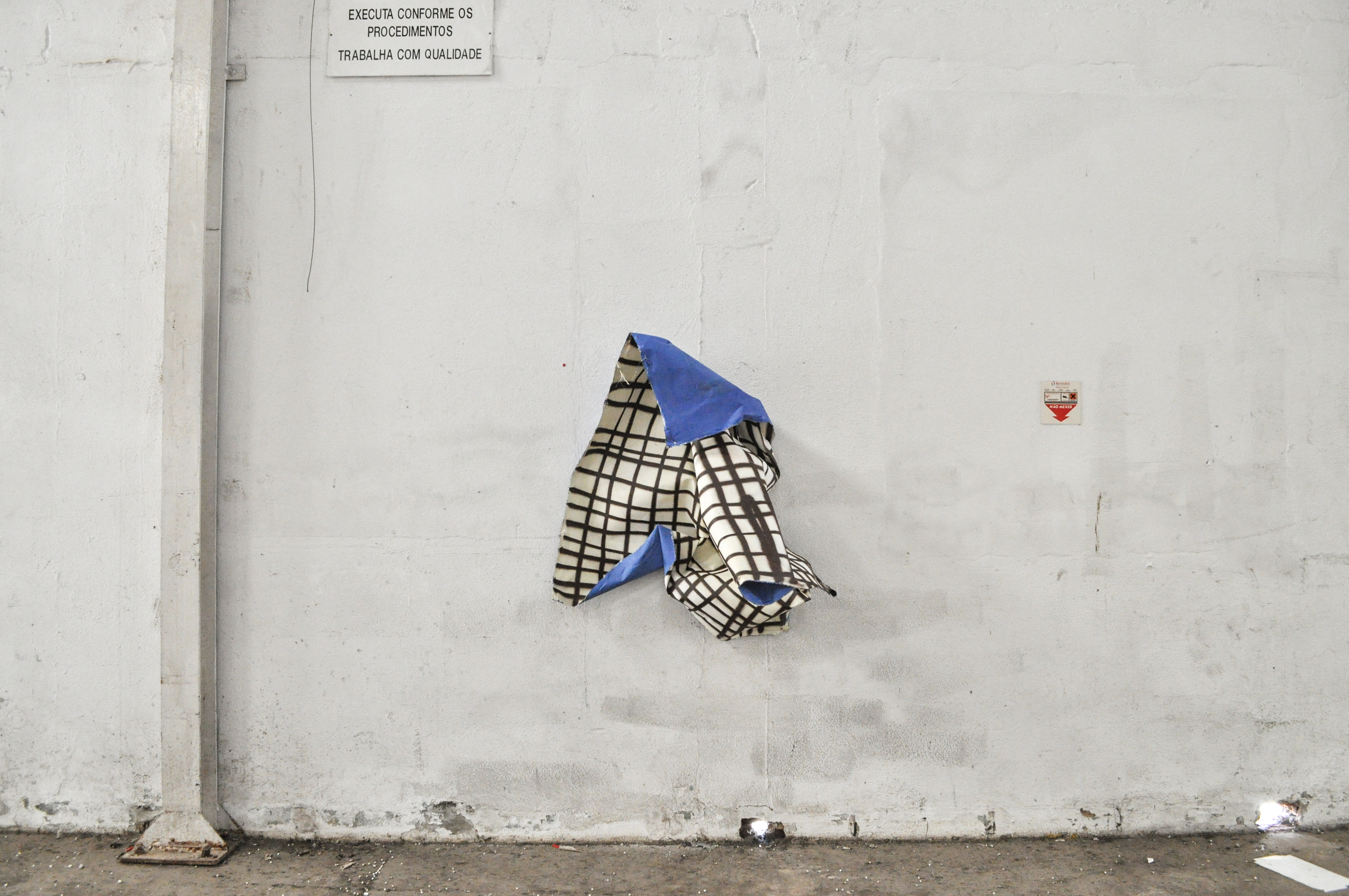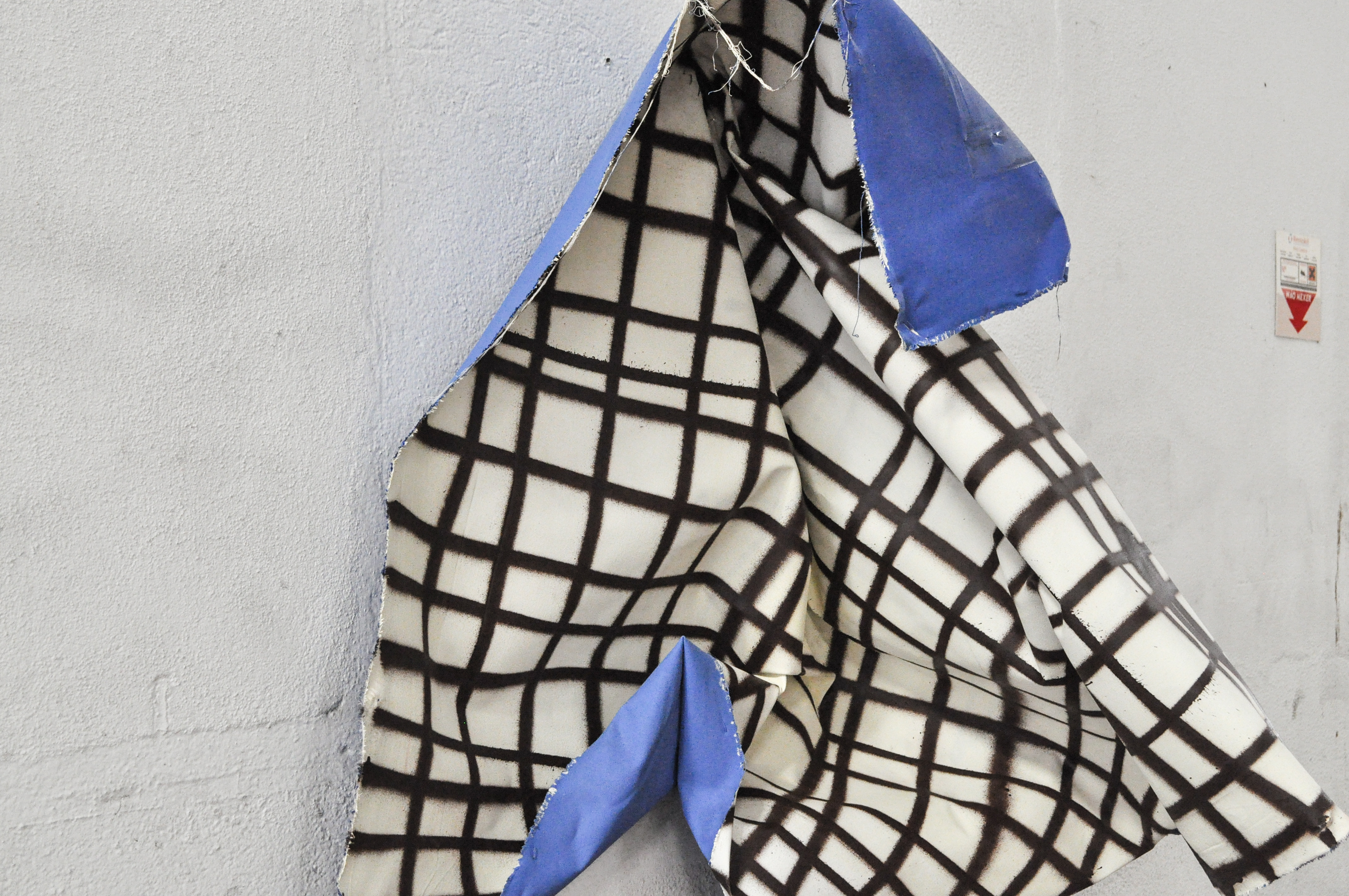‘Witch Stone, Seed Pods, Bee Hive’, 2023
Monoprint, oil paint on recycled paper,
90cm x 64cm
Monoprint, oil paint on recycled paper,
90cm x 64cm

‘Spore, Bingo, Evolution’, 2023
Monoprint, oil paint on recycled paper,
90cm x 64cm
Monoprint, oil paint on recycled paper,
90cm x 64cm

‘Radish, Holley Stone, Electron’, 2023
Monoprint, oil paint on recycled paper,
90cm x 64cm
Monoprint, oil paint on recycled paper,
90cm x 64cm
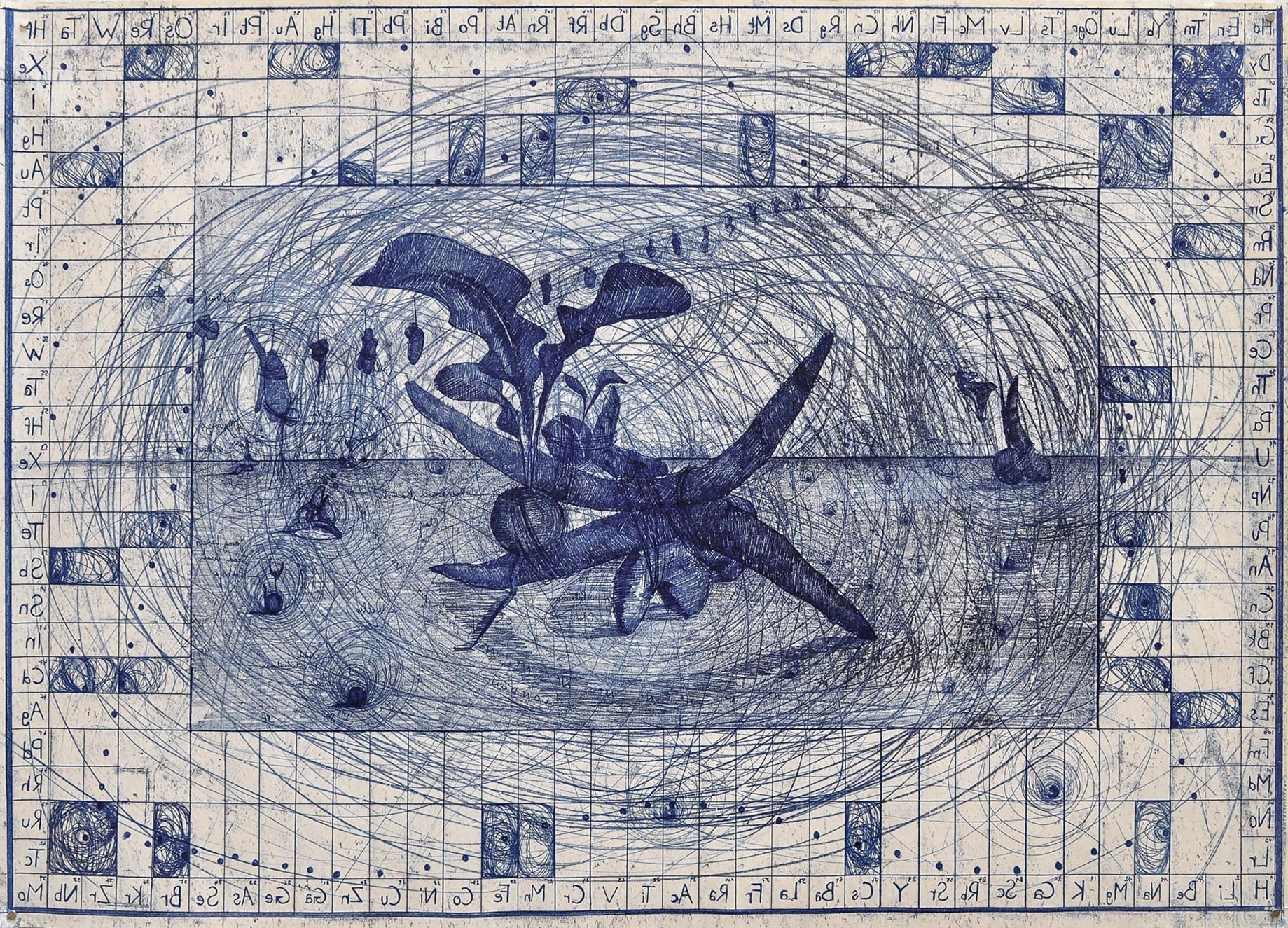
‘Protozoa, Kale, Voltaire’, 2023
Monoprint, oil paint on recycled paper,
90cm x 64cm
Monoprint, oil paint on recycled paper,
90cm x 64cm

‘Potatoes, Clay, Ants’,2023
Monoprint, oil paint on recycled paper,
90cm x 64cm
Monoprint, oil paint on recycled paper,
90cm x 64cm

‘Collection of Sand II’, 2022
Gloves, parsley, tape, borlitti bean, polyethylene, jade, ceramic, green manure, emergency blan- ket, tape mesure, carolina cayenne chilli, thread, bamboo, rhubarbe, sand, painting from Sukey Sleeper, paper clips, nitrogene, clay, micro organism, polystyrene, dwarf french bean purple queen , painting from Phillip Reeves, golden cayenne chilli, etc.
Site specific installation for OrganicLea aniversary festival. OrganicLea is a community food project based in the Lea Valley in north-east London. With a workers’ cooperative at theirs core, they bring people together to take action towards a more just and sustainable society.
This installation is part of a series of work exploring the system of life. The work is buil with elements gleaned in OrganicLea, its surroundings and components from previous artwork. Introducing the circular economy with its transformation process into the process of the artwork.
The work often lies on a table, a place where thoughts flows and where we have dedicated time to think. The table became a sort of map, a mind map, a Sci-fi map, or simply a map of OrganicLea seen through ants’ eyes? Through a cartographic layout, we jump from the mico and the macro. The components are lined up from A to B, inviting to question the idea of no- menclature, definition and boundaries.
The title comes from Italo Calvino’ book, in his short nouvelle ‘Collection of Sand’ he explores the underneath of what is the purpose of a collection, the impulse of collecting objects and what existential question lies in this act.
Gloves, parsley, tape, borlitti bean, polyethylene, jade, ceramic, green manure, emergency blan- ket, tape mesure, carolina cayenne chilli, thread, bamboo, rhubarbe, sand, painting from Sukey Sleeper, paper clips, nitrogene, clay, micro organism, polystyrene, dwarf french bean purple queen , painting from Phillip Reeves, golden cayenne chilli, etc.
Site specific installation for OrganicLea aniversary festival. OrganicLea is a community food project based in the Lea Valley in north-east London. With a workers’ cooperative at theirs core, they bring people together to take action towards a more just and sustainable society.
This installation is part of a series of work exploring the system of life. The work is buil with elements gleaned in OrganicLea, its surroundings and components from previous artwork. Introducing the circular economy with its transformation process into the process of the artwork.
The work often lies on a table, a place where thoughts flows and where we have dedicated time to think. The table became a sort of map, a mind map, a Sci-fi map, or simply a map of OrganicLea seen through ants’ eyes? Through a cartographic layout, we jump from the mico and the macro. The components are lined up from A to B, inviting to question the idea of no- menclature, definition and boundaries.
The title comes from Italo Calvino’ book, in his short nouvelle ‘Collection of Sand’ he explores the underneath of what is the purpose of a collection, the impulse of collecting objects and what existential question lies in this act.







‘Collection of Sand’, 2022
Site specific installation realized during a month long residency at the Cyprus College of Art.
Table, snails, Solandra maxima, scissors, cala- mondin, oil ink, glass of water, 5$, string, eucalyptus fruit, water, brick, video, oxygen, pastel, mirror, liz- zard, pomegranate, pins, charcoal, composite timber, chair, seeds, 120gm paper, oxidised metal, needles, Opunta ficus-indica, olive pips, wire metal, tape, glue, roots.
Site specific installation realized during a month long residency at the Cyprus College of Art.
Table, snails, Solandra maxima, scissors, cala- mondin, oil ink, glass of water, 5$, string, eucalyptus fruit, water, brick, video, oxygen, pastel, mirror, liz- zard, pomegranate, pins, charcoal, composite timber, chair, seeds, 120gm paper, oxidised metal, needles, Opunta ficus-indica, olive pips, wire metal, tape, glue, roots.
‘The table maker II’, 2022
Installation comissioned by John Wyatt-Clarke currator for ‘Room Share’ organized by BLINK Collective at the Safe House in Peckham London.
Table, plant catalogue, string, Kalanchoe beharensis, coir, clay, ruller, charcoal, cissors, oyster shell, pearl, aralia, corals, timber, grape stem, glue, needles, paper, metal wire, sand, ink, wool, tape, ceramic.
This work was presented with an audio piece realized by Lisa Hall & Hannah Kemp-Welch, Sound Map (2017), 14 audio works, 2 minutes each.
Installation comissioned by John Wyatt-Clarke currator for ‘Room Share’ organized by BLINK Collective at the Safe House in Peckham London.
Table, plant catalogue, string, Kalanchoe beharensis, coir, clay, ruller, charcoal, cissors, oyster shell, pearl, aralia, corals, timber, grape stem, glue, needles, paper, metal wire, sand, ink, wool, tape, ceramic.
This work was presented with an audio piece realized by Lisa Hall & Hannah Kemp-Welch, Sound Map (2017), 14 audio works, 2 minutes each.
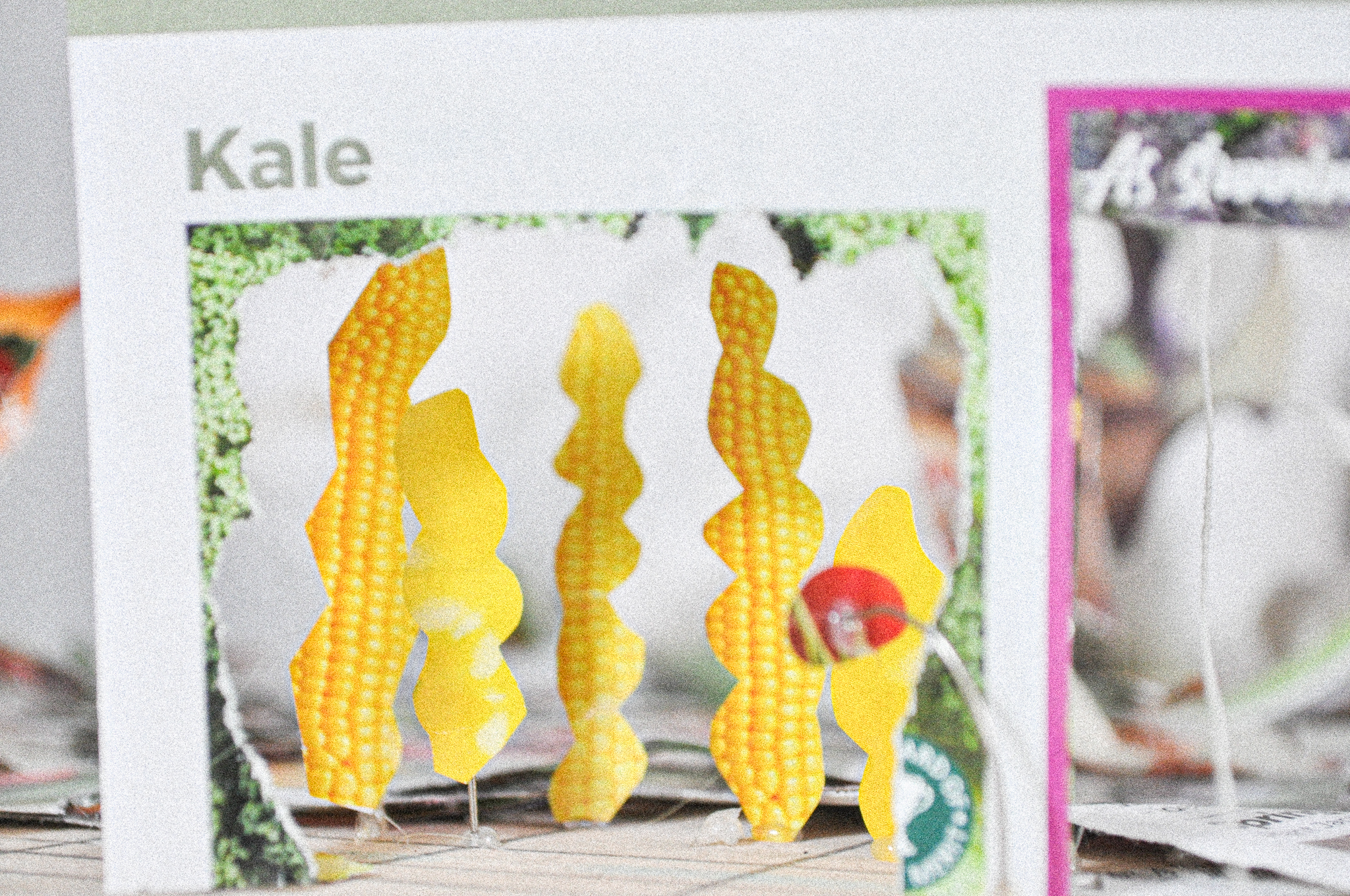

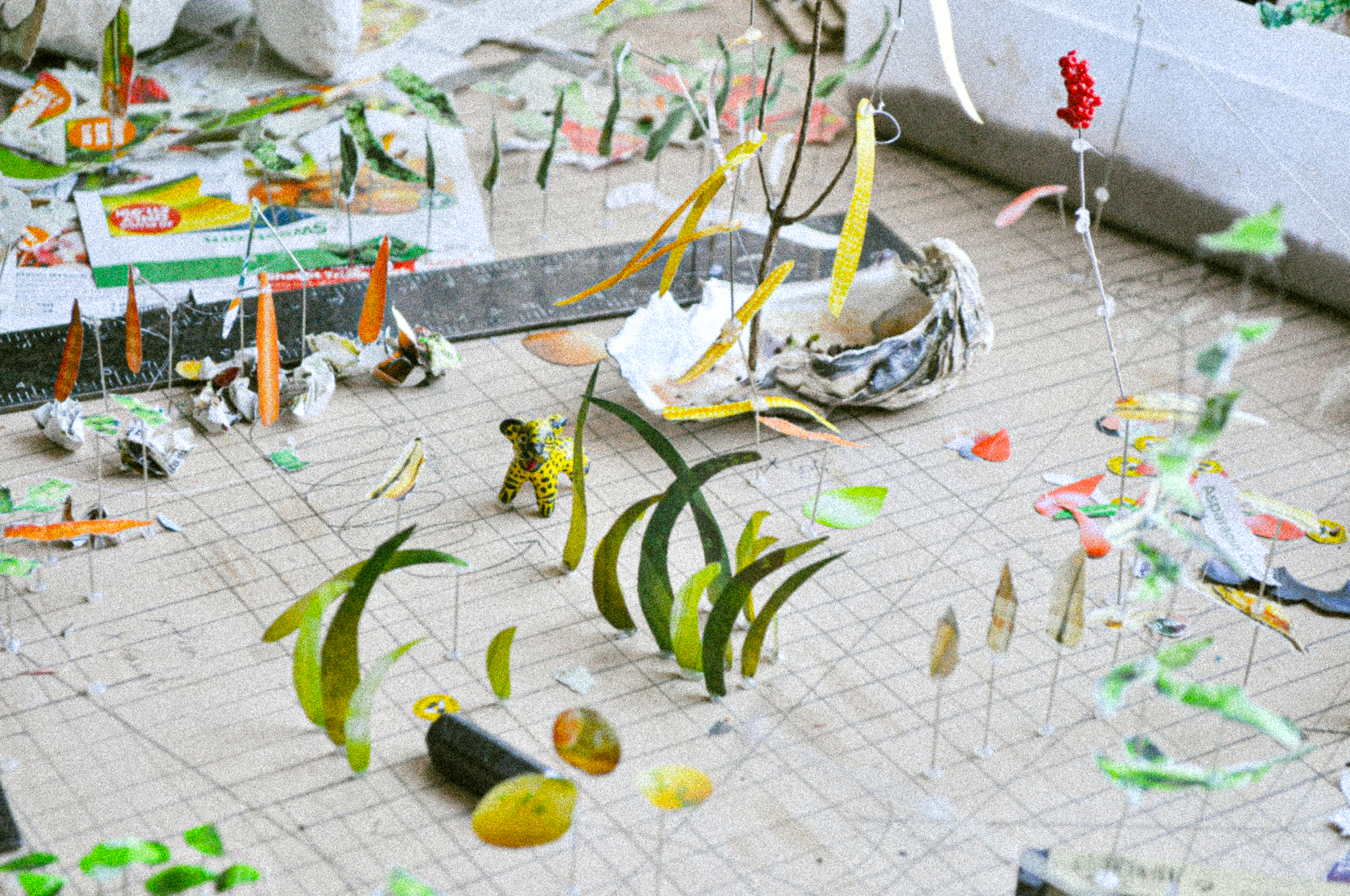
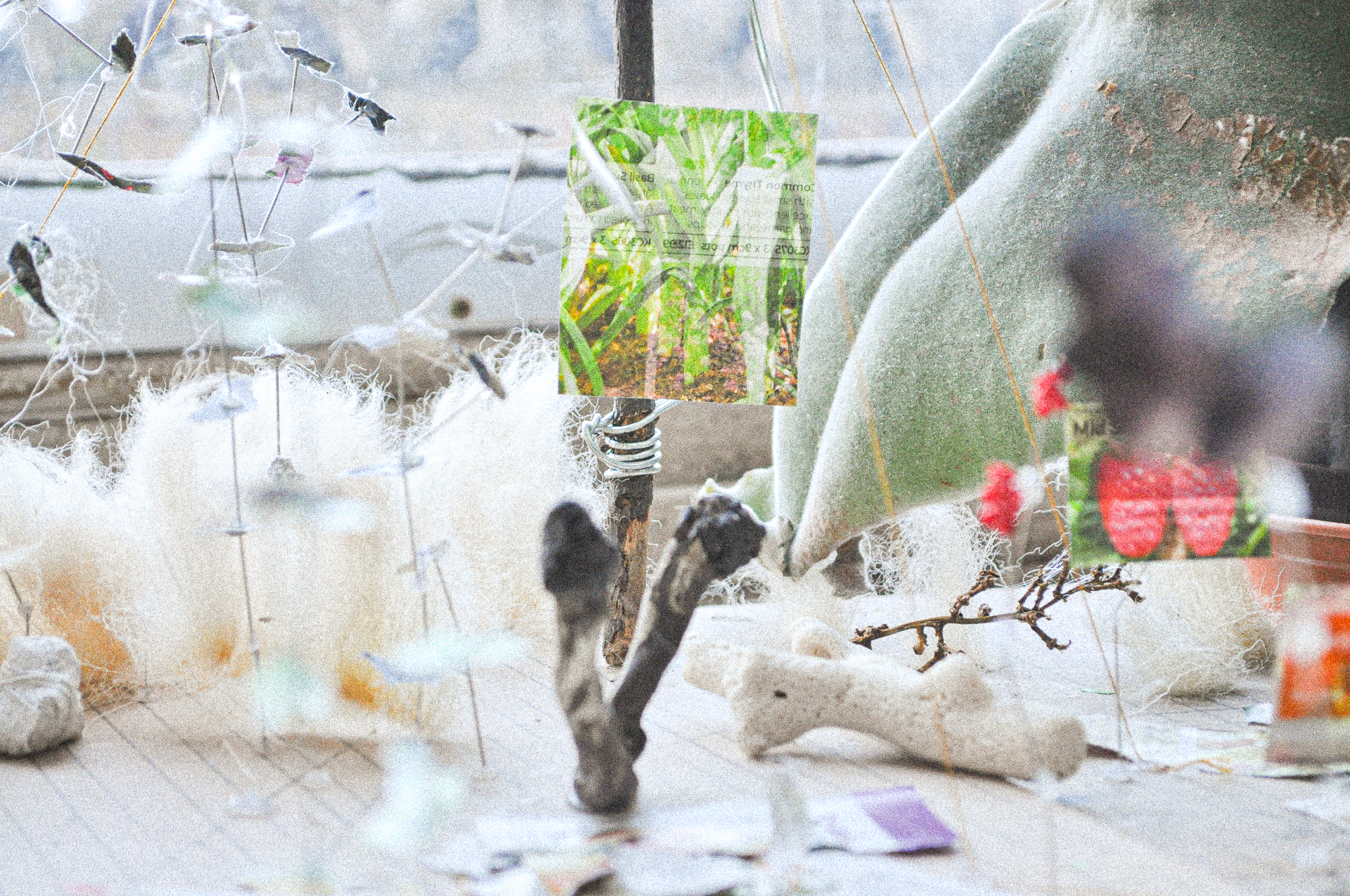
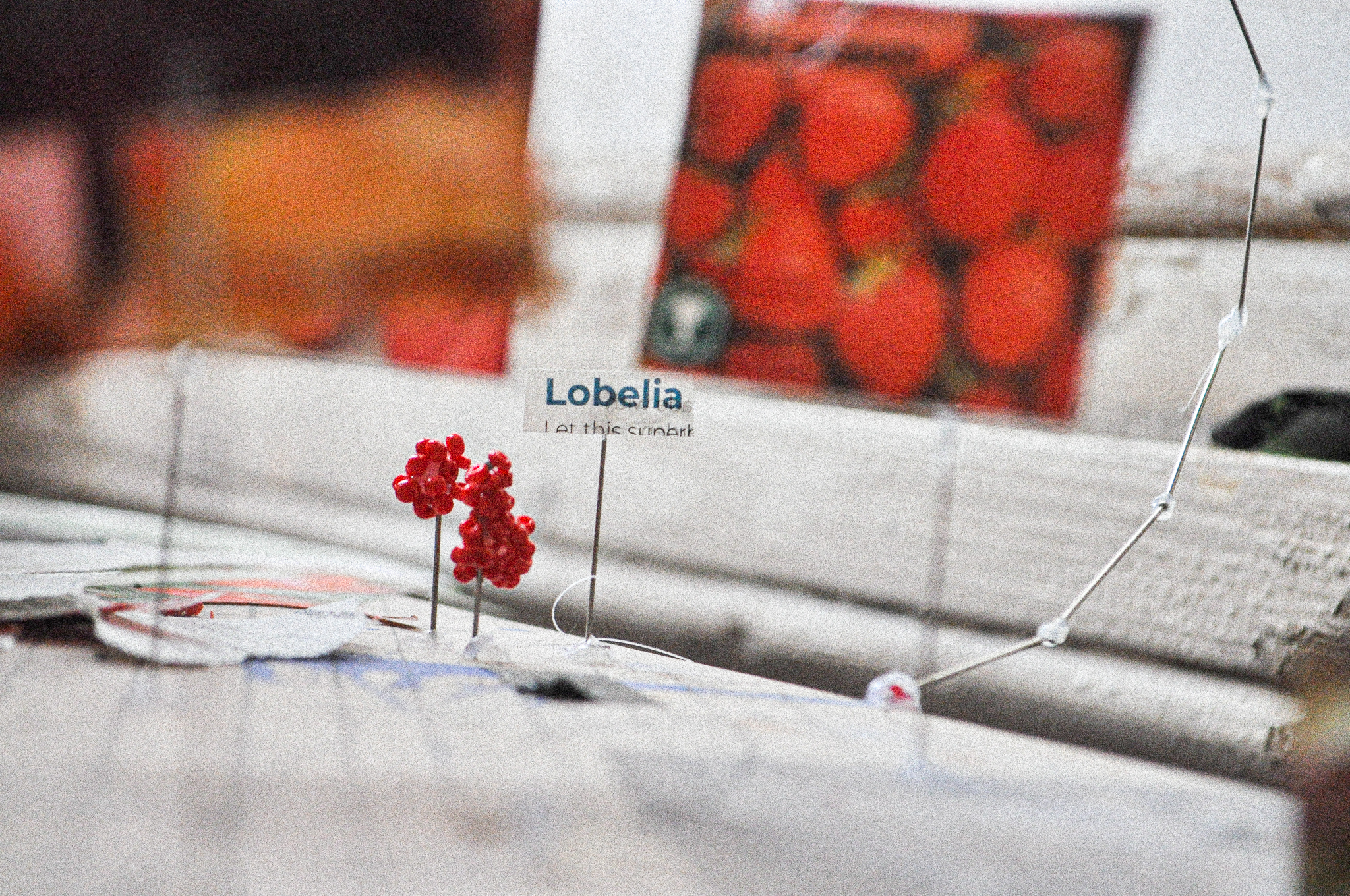
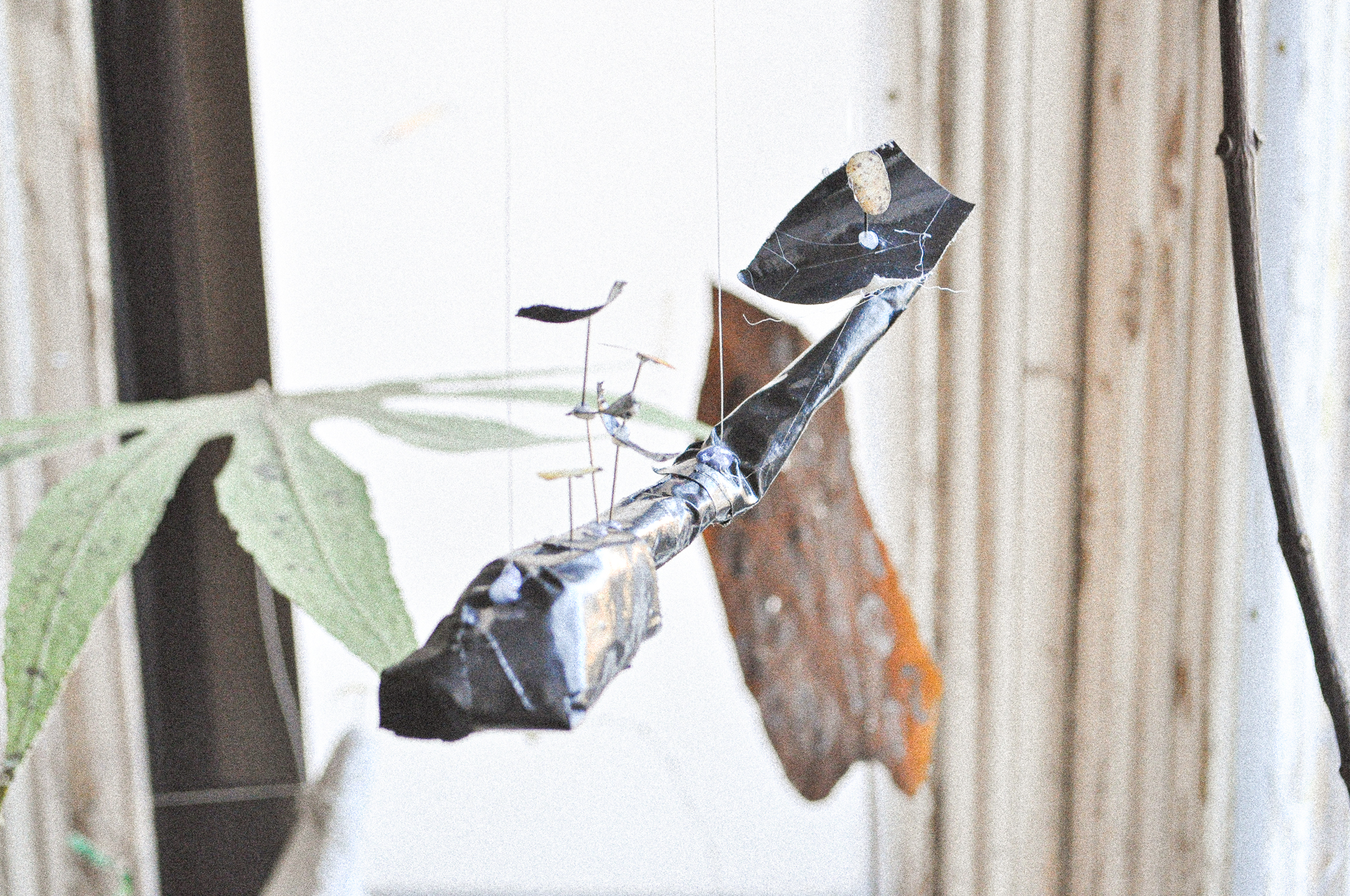
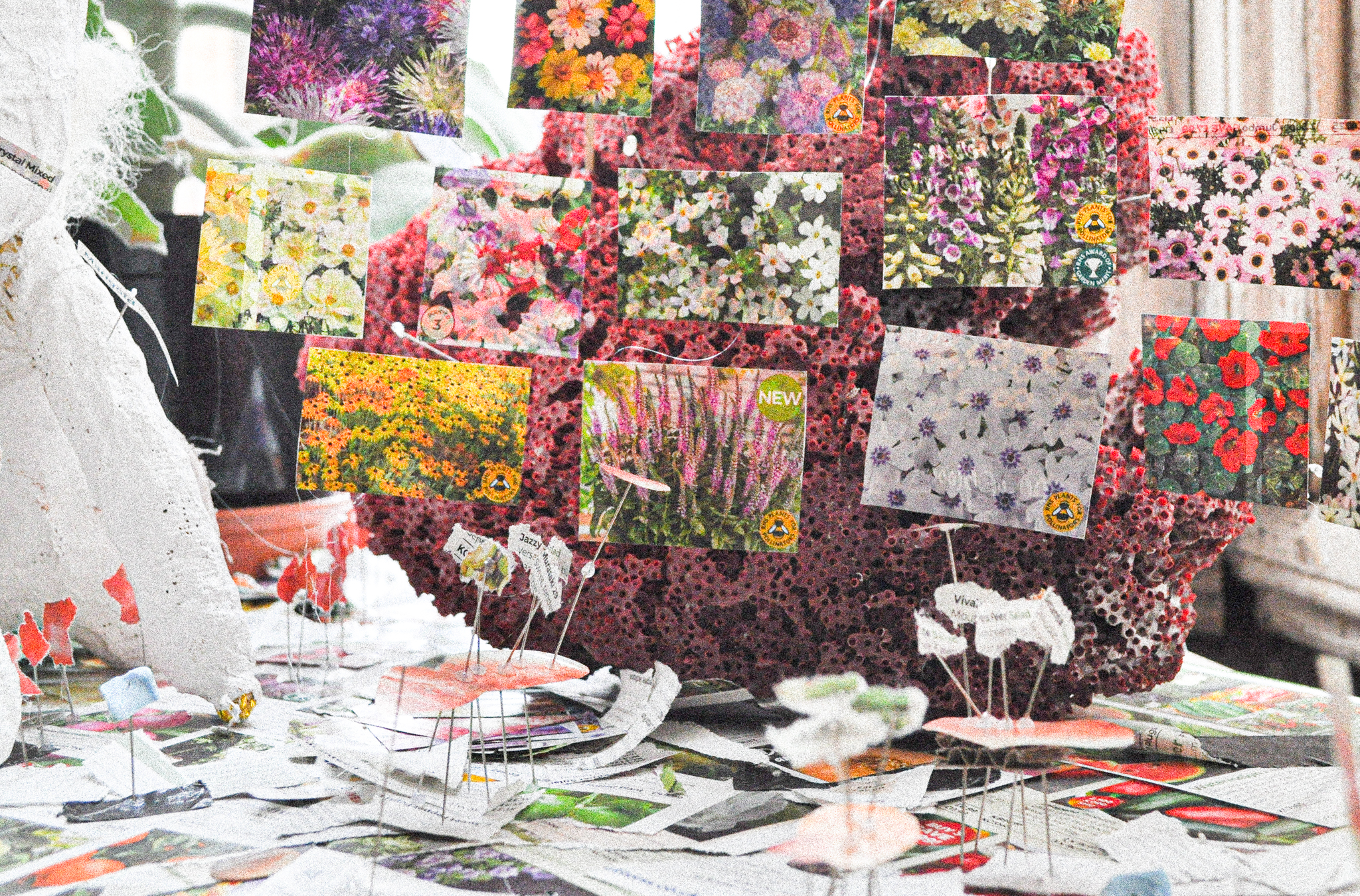
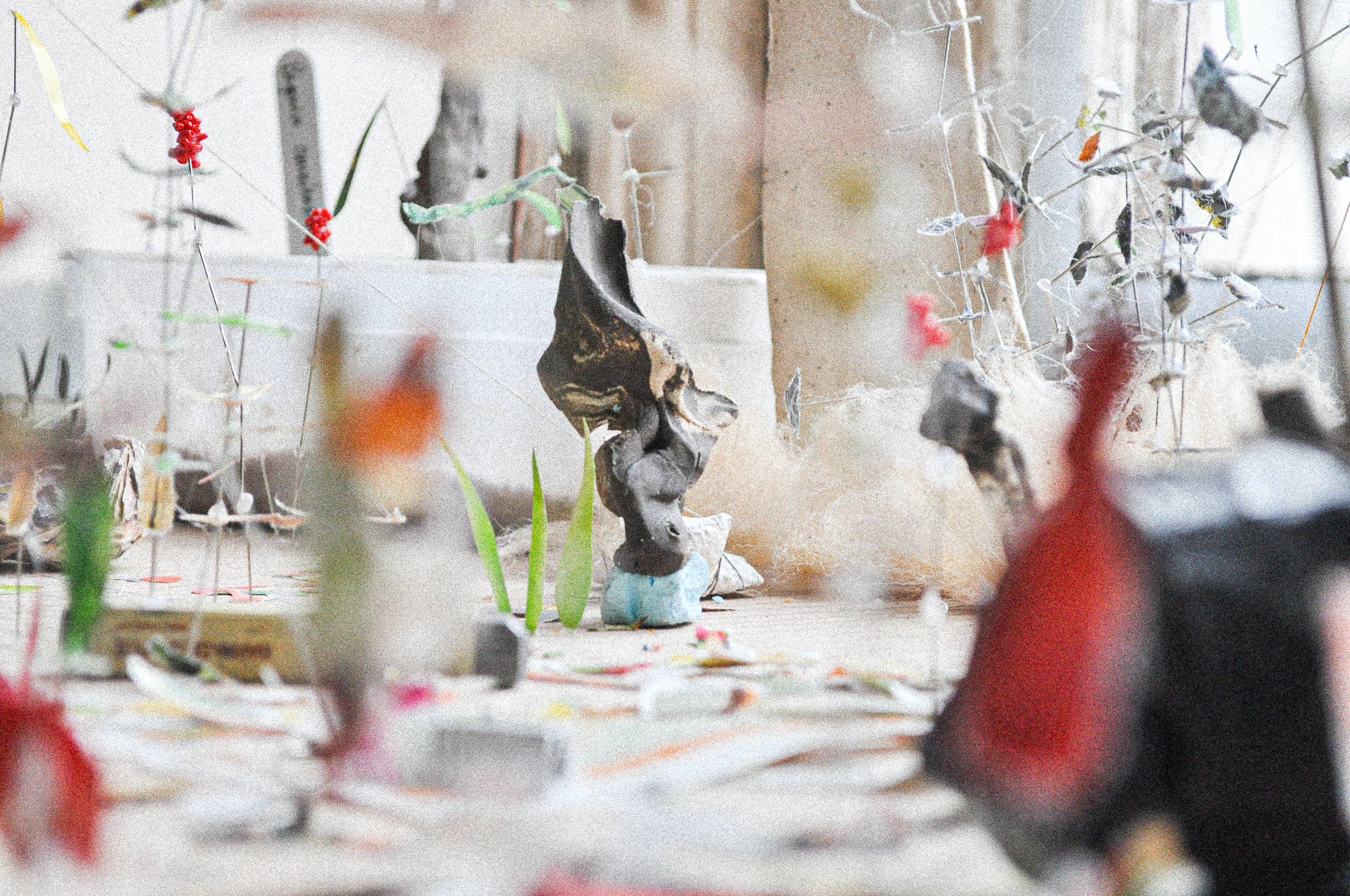
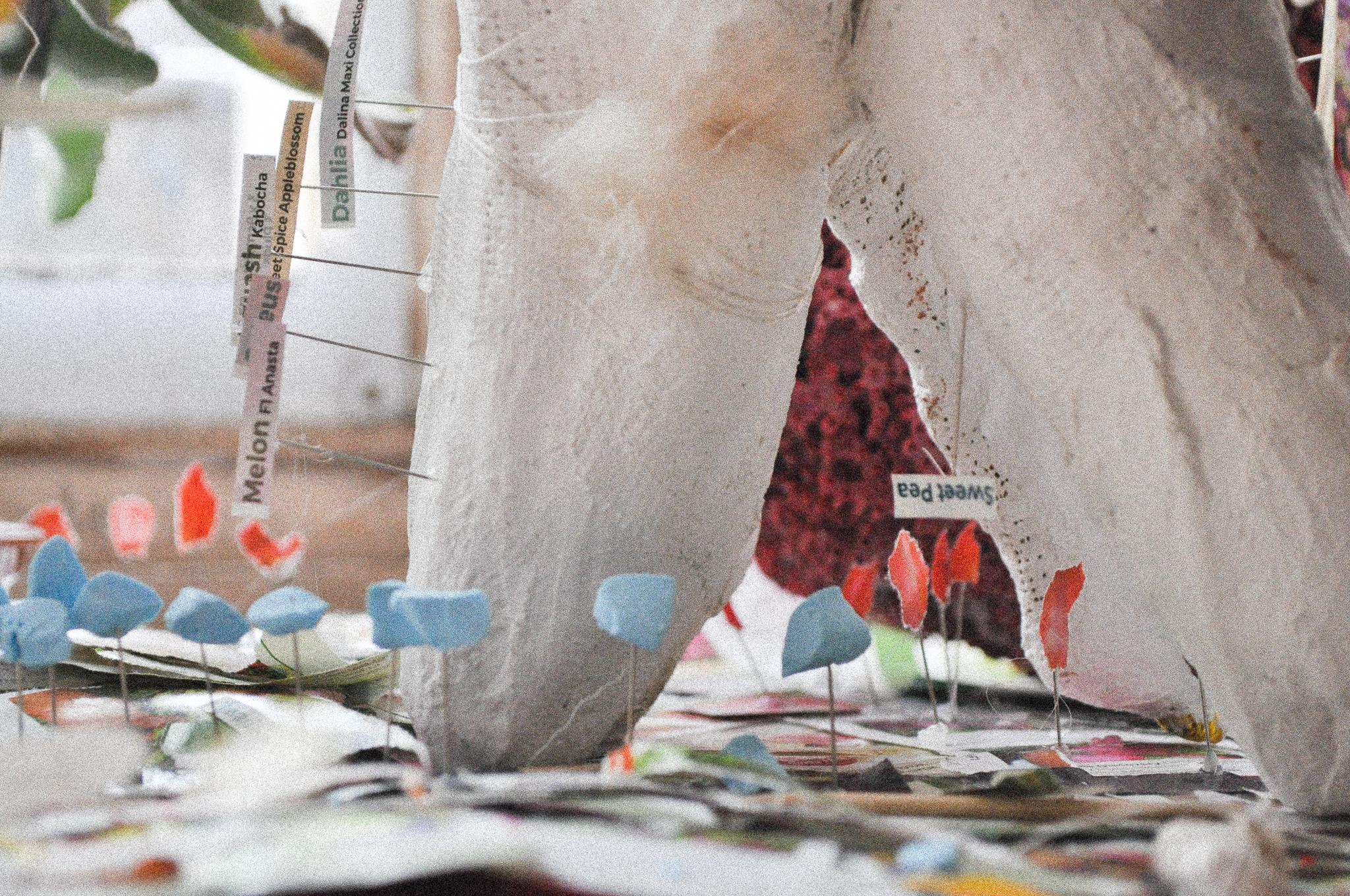
‘Begonias 2094’, 2021
Installation, Begonias, soil, water, emergency blanquets, charcoal.
Installation shots for Turps final show at Thames Sides Studio Gallery, London.
’2094 Begonias’ is an installation of 27 emergency blankets. On the blankets the entire list of existing species of begonia is written. Written and embedded – seared even – with a process based on charcoal. Alongside the blankets, a large quantity of begonias were planted on the gallery floor. This work questions the gesture of writing in learning, our awareness of botanical species and notions of materiality in a time of fragile virtual information. It make us reflect on where we get flora knowledge nowadays, how all knowledge is transferred and from whom?
Installation, Begonias, soil, water, emergency blanquets, charcoal.
Installation shots for Turps final show at Thames Sides Studio Gallery, London.
’2094 Begonias’ is an installation of 27 emergency blankets. On the blankets the entire list of existing species of begonia is written. Written and embedded – seared even – with a process based on charcoal. Alongside the blankets, a large quantity of begonias were planted on the gallery floor. This work questions the gesture of writing in learning, our awareness of botanical species and notions of materiality in a time of fragile virtual information. It make us reflect on where we get flora knowledge nowadays, how all knowledge is transferred and from whom?


Squating, 2021Installation, variation of ceramics

Idendify, isolate, define, label, title, time, enthropy, movement, merge, compose, isolate, identify, define...
Installation, canevas, ceramic, paper, fabric, needles, paint.
Installation, canevas, ceramic, paper, fabric, needles, paint.


Compositions
Pastel drawings on paper
21 cm x 29,7 cm, recycled paper 110gr
Thoughts about entropy We are what is around us.
First, what are the elements that surround our selves, what are they? That is one of our obsessions ... or is it a necessity for survival?
We constantly strive to define the ‘other’, the external to us, to generate sense and to run from the unknown. The fears, these fears. Defining our environment is to define ourselves. To do so we constantly repeat the following : we look, we divide in order to isolate, then we can locate and therefore define...whatever it is. Eureka, now we are safe, and in response we can anchor ourselves and others.
Time shapes this process. As time passes, it undermines, erodes, dissolves the boundaries of the previously defined elements. And we are back to defining it again, so we look, divide, isolate, locate, define.
One element divided in two gives two elements to divide, n’est-ce pas. The whole process has a hint of pointlessness. Pointless in the time wasted on a recurrent thinking process. But inevitable because to define is to define ourselves and therefore to BE, some enlightenment writers would argue. Maybe keeping boundaries softer may be a key to navigating life with more ease?
Living with entropy.
Pastel drawings on paper
21 cm x 29,7 cm, recycled paper 110gr
Thoughts about entropy We are what is around us.
First, what are the elements that surround our selves, what are they? That is one of our obsessions ... or is it a necessity for survival?
We constantly strive to define the ‘other’, the external to us, to generate sense and to run from the unknown. The fears, these fears. Defining our environment is to define ourselves. To do so we constantly repeat the following : we look, we divide in order to isolate, then we can locate and therefore define...whatever it is. Eureka, now we are safe, and in response we can anchor ourselves and others.
Time shapes this process. As time passes, it undermines, erodes, dissolves the boundaries of the previously defined elements. And we are back to defining it again, so we look, divide, isolate, locate, define.
One element divided in two gives two elements to divide, n’est-ce pas. The whole process has a hint of pointlessness. Pointless in the time wasted on a recurrent thinking process. But inevitable because to define is to define ourselves and therefore to BE, some enlightenment writers would argue. Maybe keeping boundaries softer may be a key to navigating life with more ease?
Living with entropy.


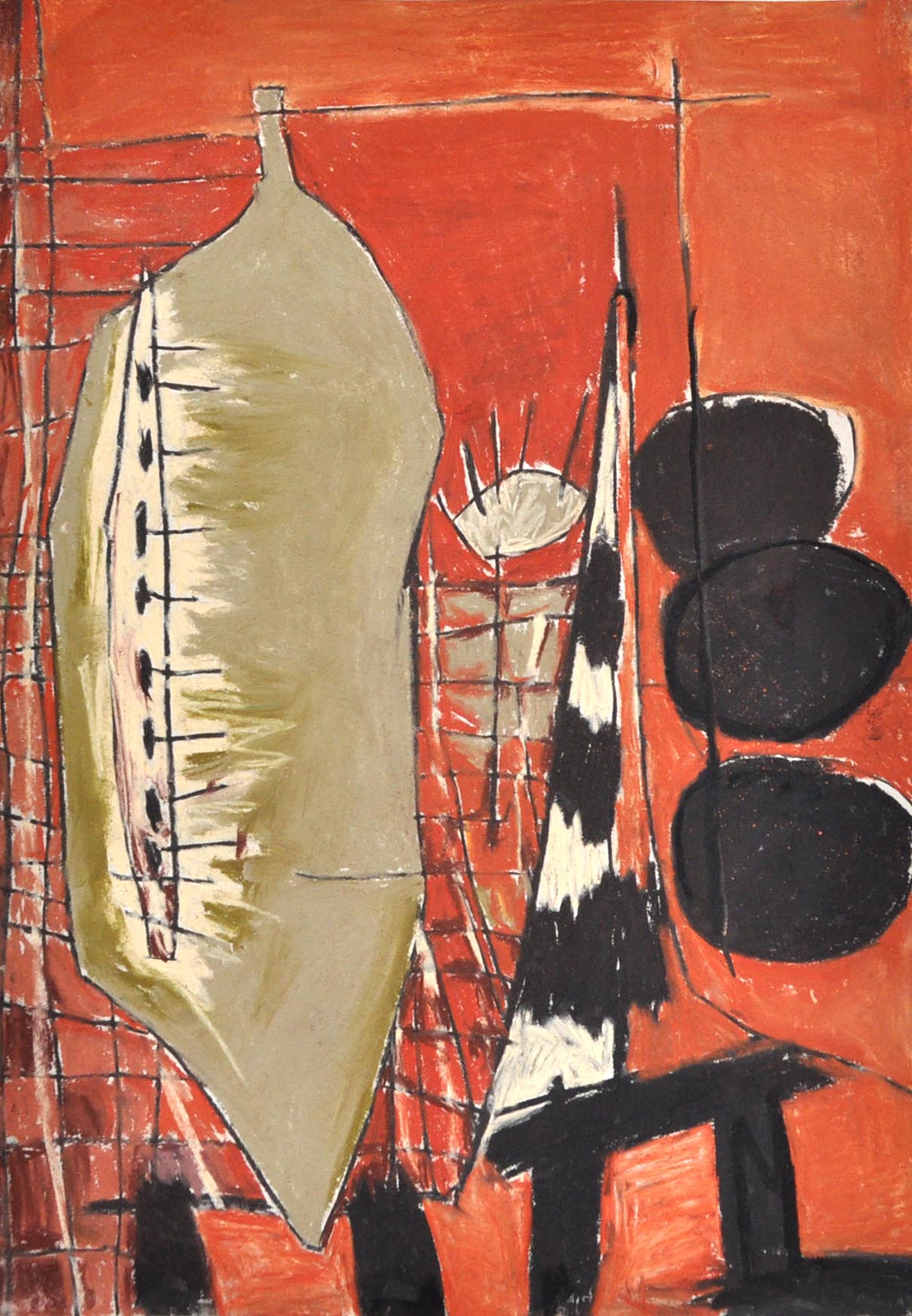
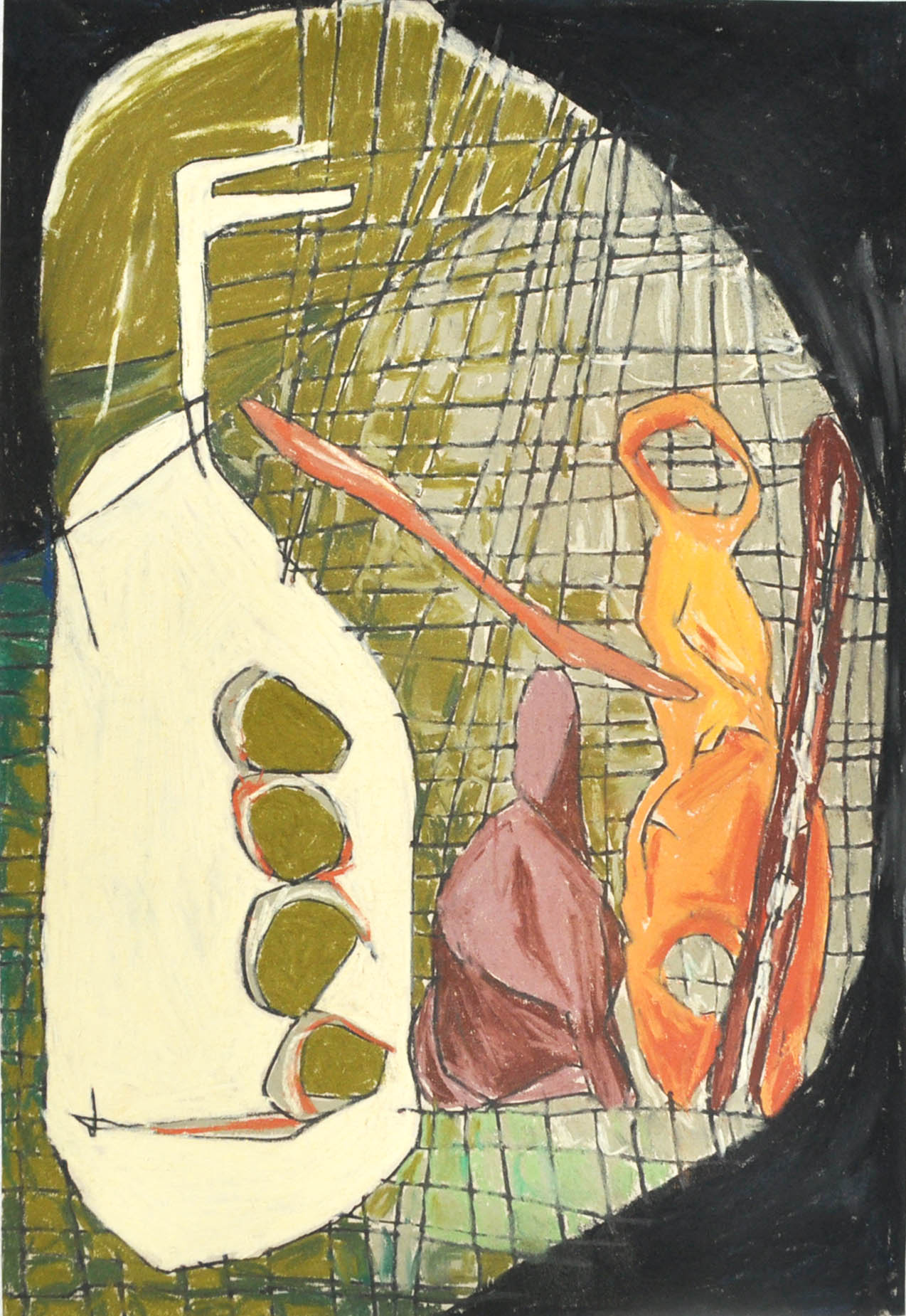

Trauma and after, 2020
Cotton acrylic clay ceramic and jute. 2400mm x 2400mm
Cotton acrylic clay ceramic and jute. 2400mm x 2400mm


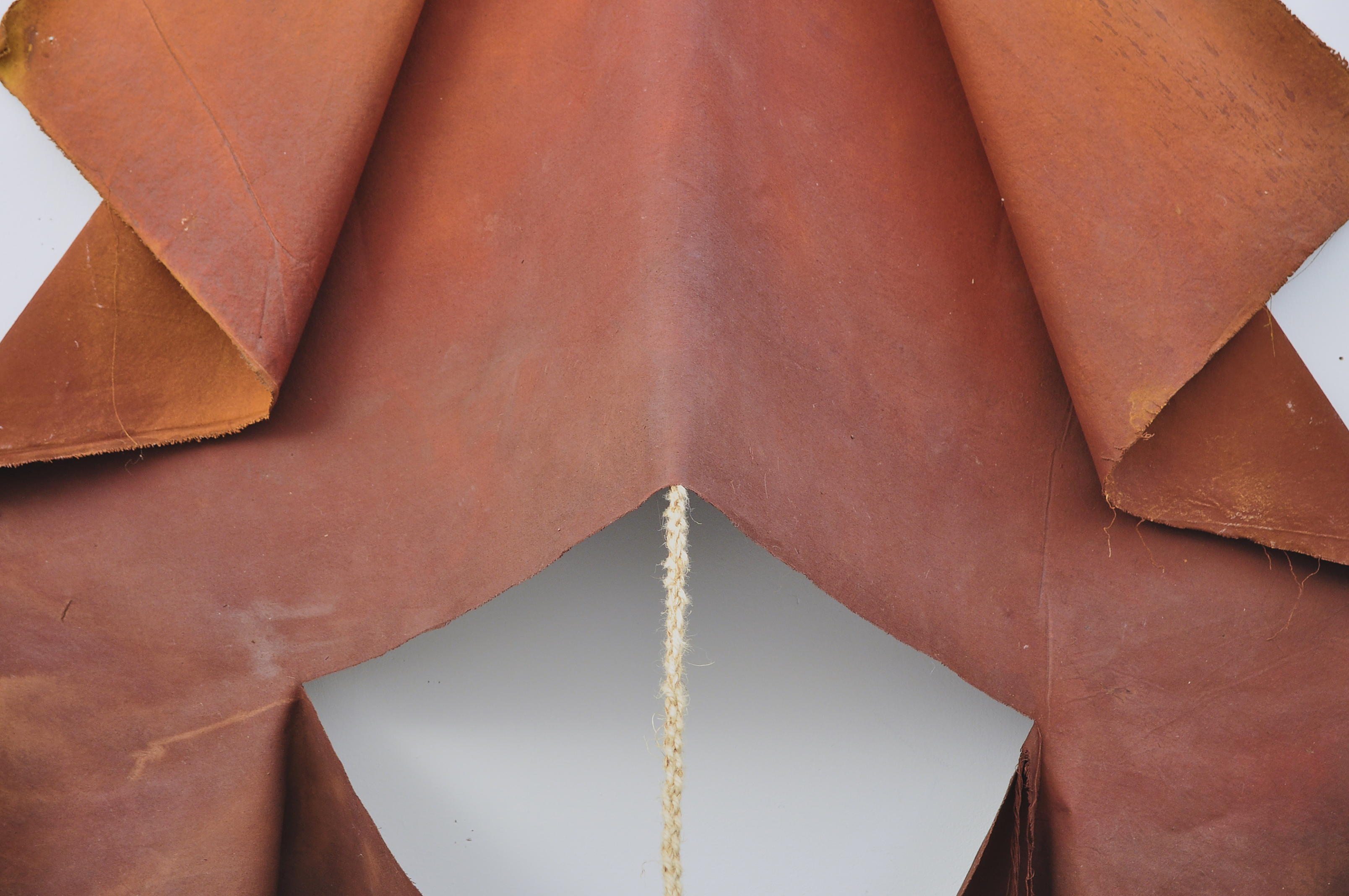

He says from 0 to 7 years old is the most important years,
Cotton, acrylic, hemp, needles, charcoal.
Thoughts of resilience Definition from Boris Cyrulnik, French neuropsychiatrist and ethnologist.
Resilience is the ability to withstand shocks without permanent deformation or rupture. The quality of being able to return quickly to a previous good condition after a traumatic event.
Cotton, acrylic, hemp, needles, charcoal.
Thoughts of resilience Definition from Boris Cyrulnik, French neuropsychiatrist and ethnologist.
Resilience is the ability to withstand shocks without permanent deformation or rupture. The quality of being able to return quickly to a previous good condition after a traumatic event.


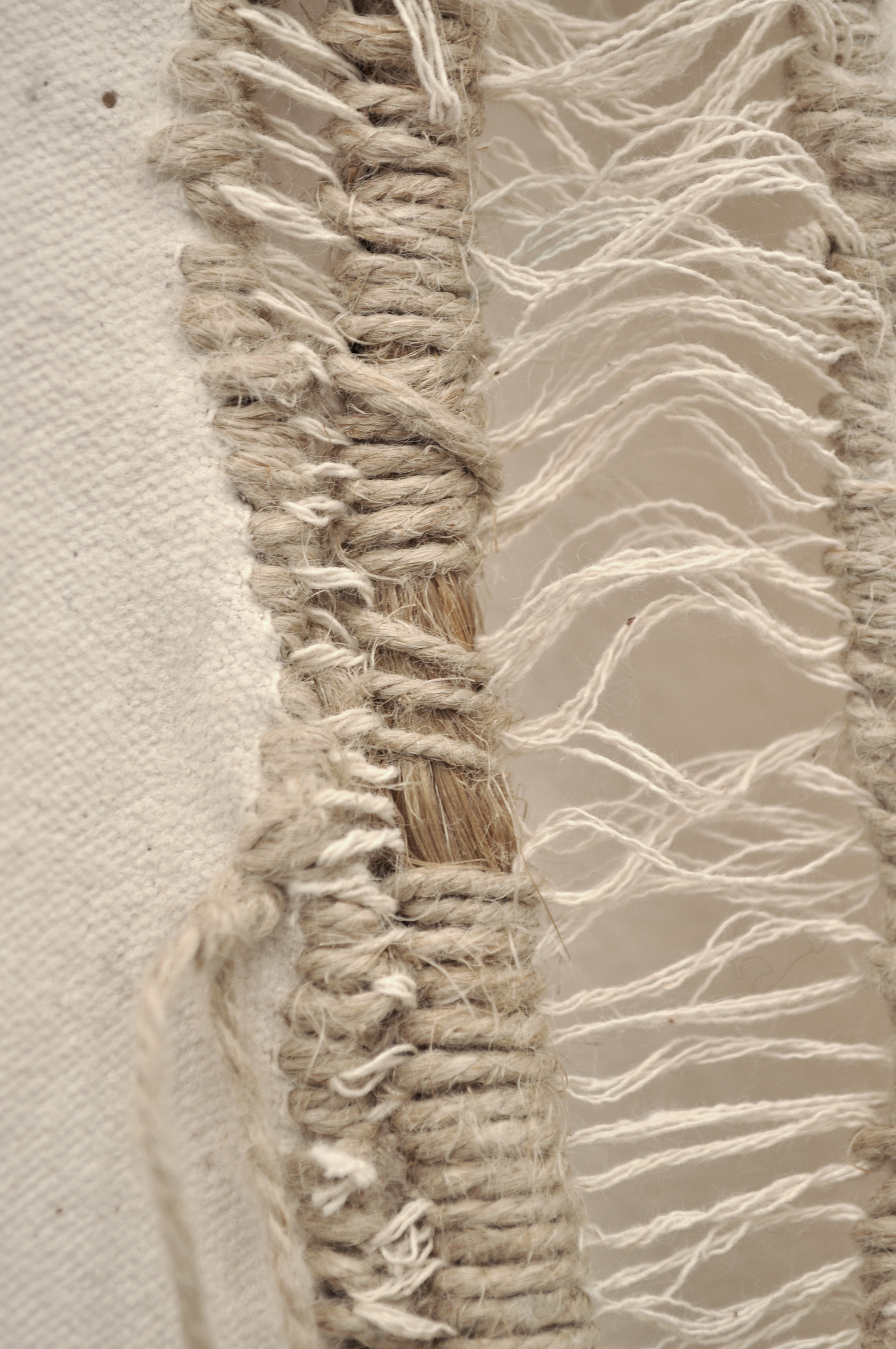


System systems, 2020,
Shelf, ceramic, linen, cotton, whool, needles.
Thoughts on the symbioses
Element apart.
Looking carefully, introspection, forensic, excavation.
The shape informs the reason or the reason informs the shape?
Anthropocentrism.
Where shapelessness can exist?
Is everything responding to something else?
The outside is the inside.
The macro is microcosm.
And we are part of it.
Shelf, ceramic, linen, cotton, whool, needles.
Thoughts on the symbioses
Element apart.
Looking carefully, introspection, forensic, excavation.
The shape informs the reason or the reason informs the shape?
Anthropocentrism.
Where shapelessness can exist?
Is everything responding to something else?
The outside is the inside.
The macro is microcosm.
And we are part of it.
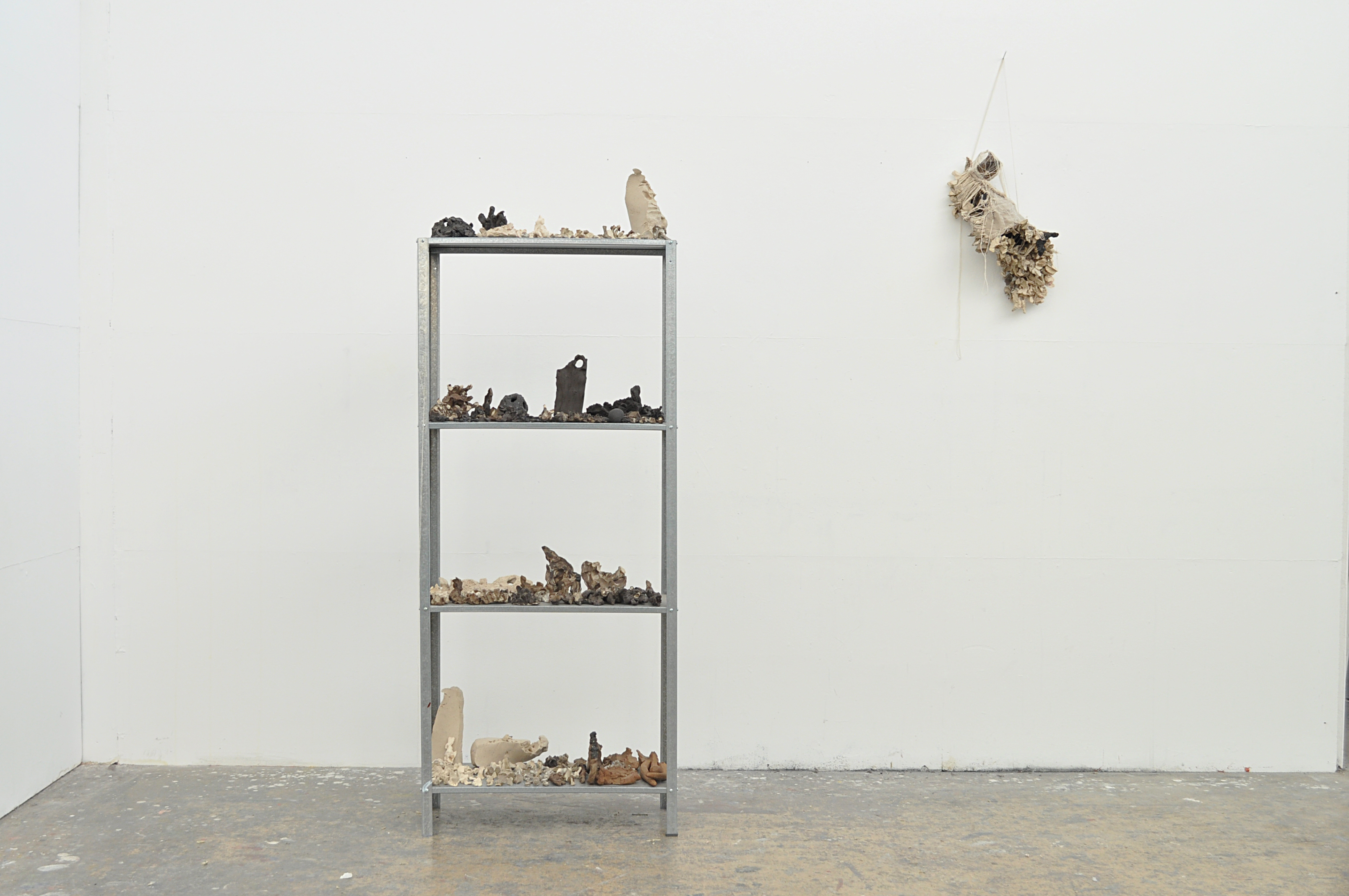
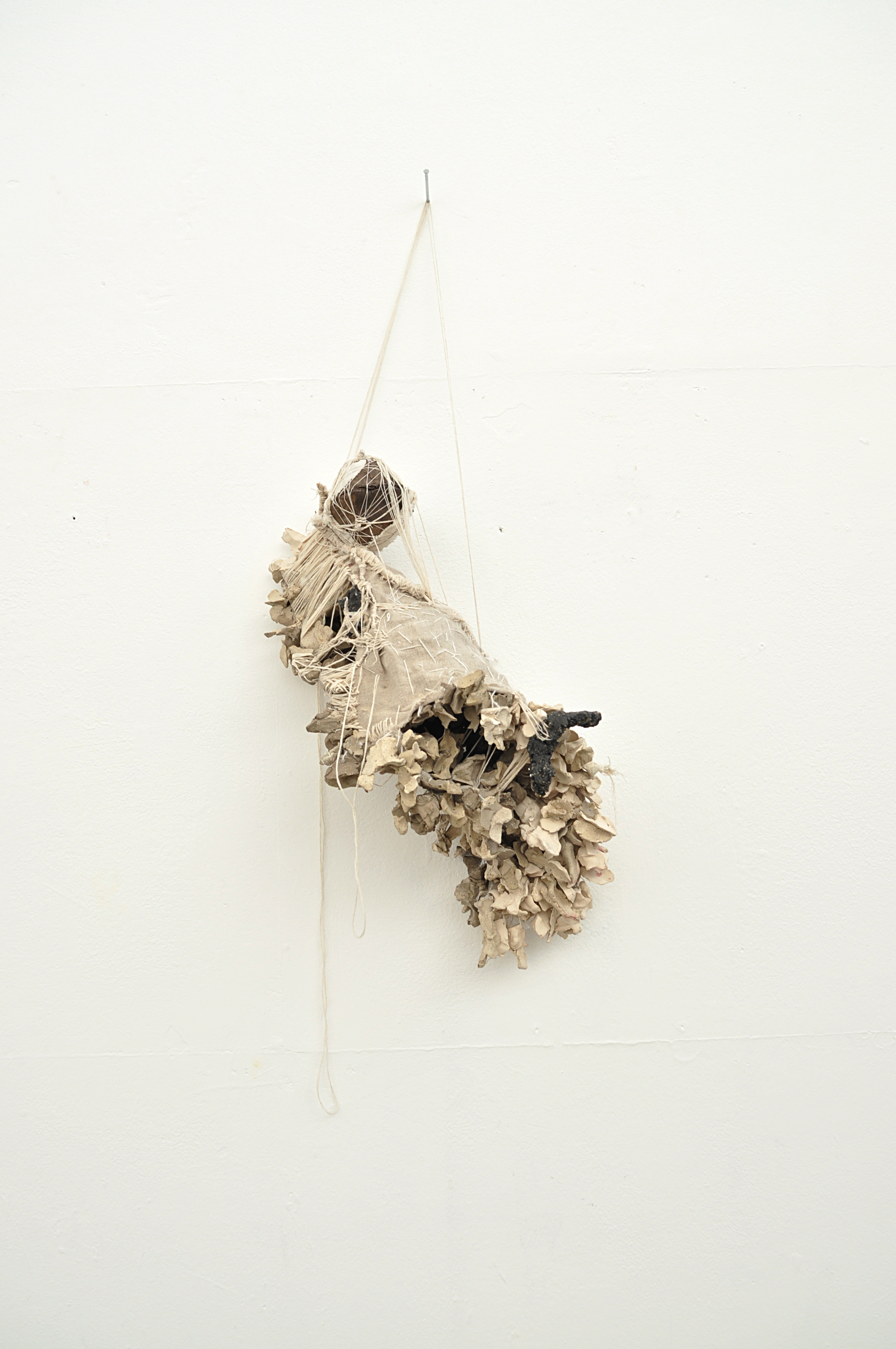


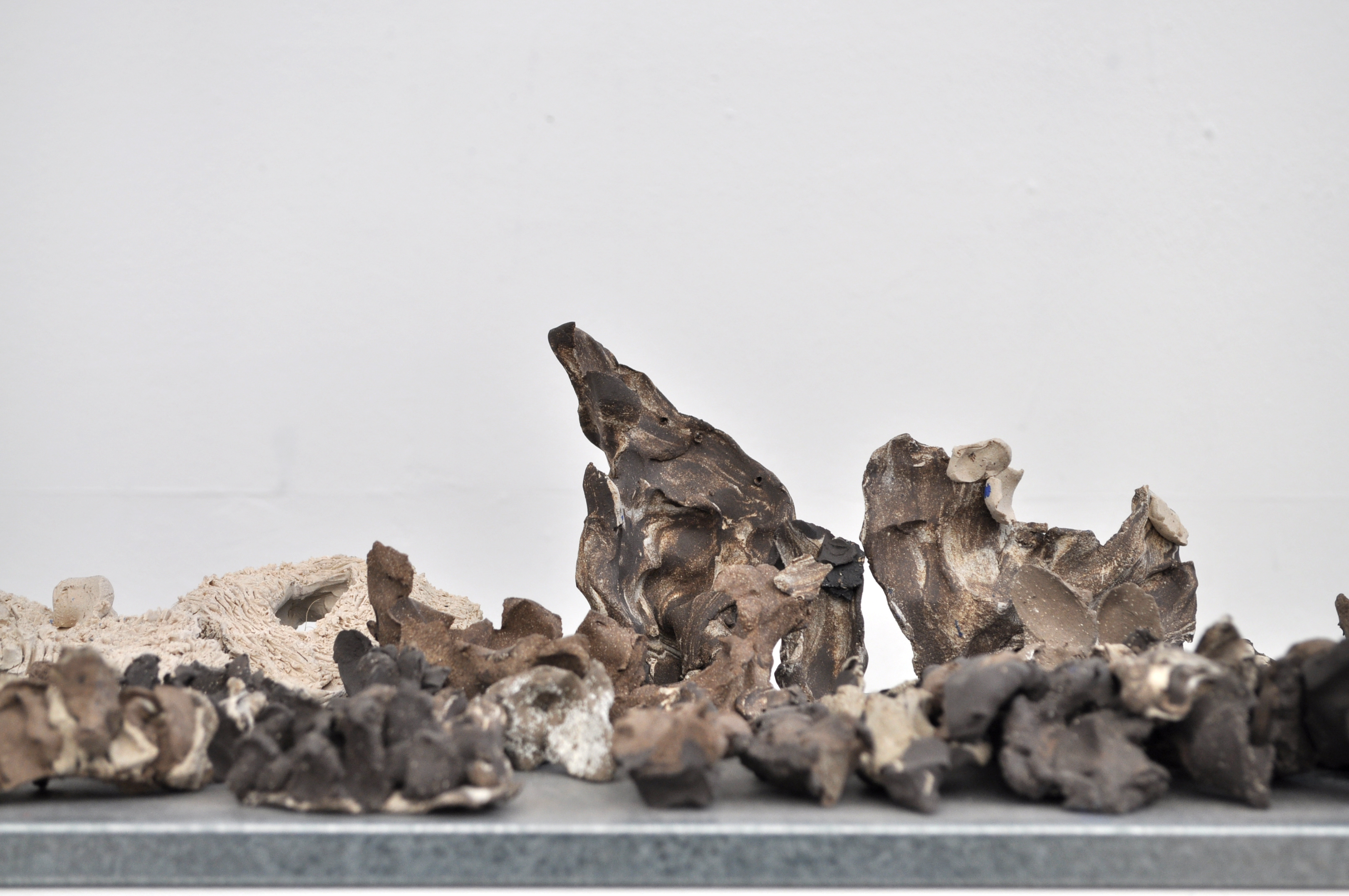

Thoughts about entropy We are what is around us.
First, what are the elements that surround our selves, what are they? That is one of our obsessions ... or is it a necessity for survival?
We constantly strive to define the ‘other’, the external to us, to generate sense and to run from the unknown. The fears, these fears. Defining our environment is to define ourselves. To do so we constantly repeat the following : we look, we divide in order to isolate, then we can locate and therefore define...whatever it is. Eureka, now we are safe, and in response we can anchor ourselves and others.
Time shapes this process. As time passes, it undermines, erodes, dissolves the boundaries of the previously defined elements. And we are back to defining it again, so we look, divide, isolate, locate, define.
One element divided in two gives two elements to divide, n’est-ce pas. The whole process has a hint of pointlessness. Pointless in the time wasted on a recurrent thinking process. But inevitable because to define is to define ourselves and therefore to BE, some enlightenment writers would argue. Maybe keeping boundaries softer may be a key to navigating life with more ease?
Living with entropy.


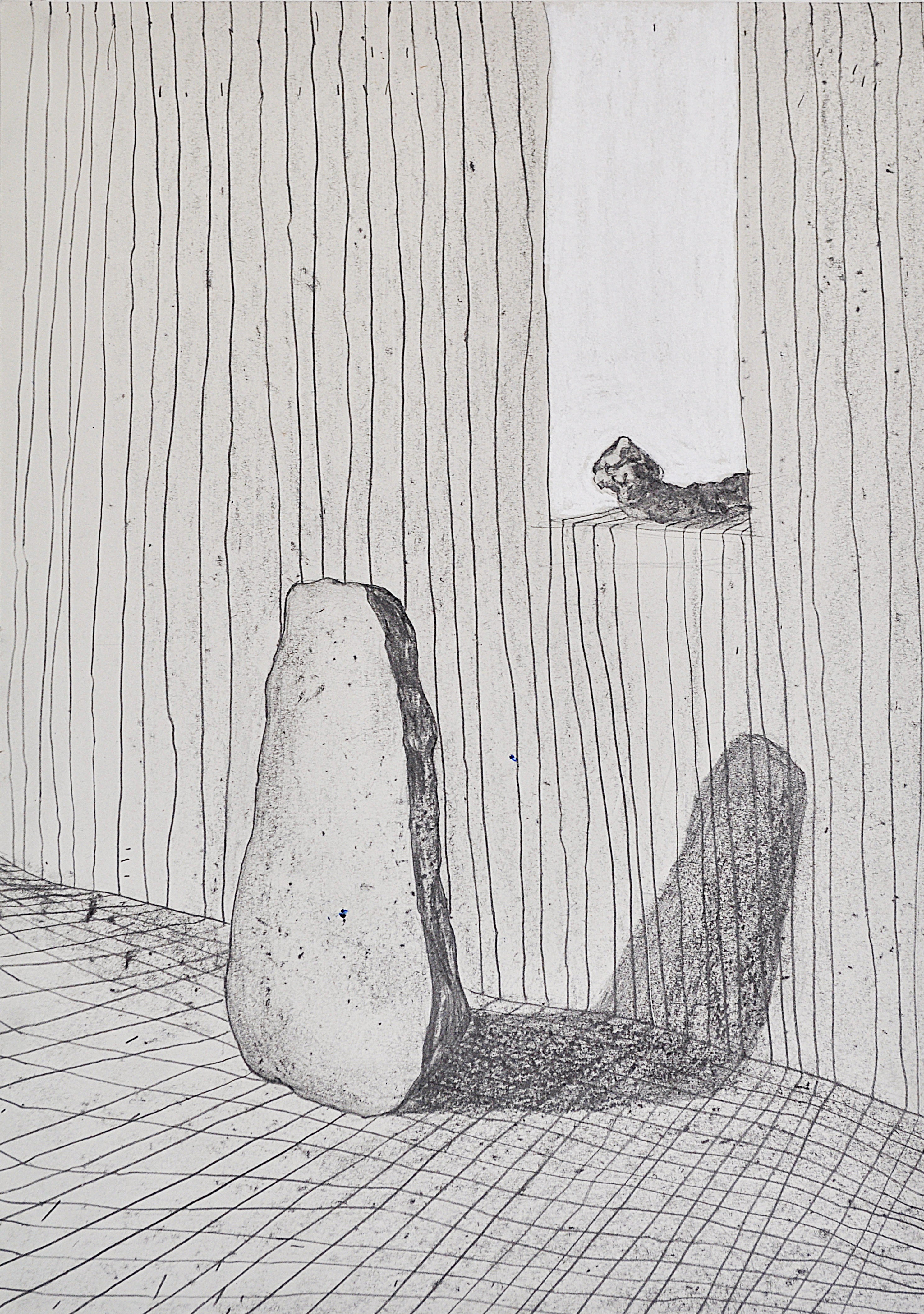
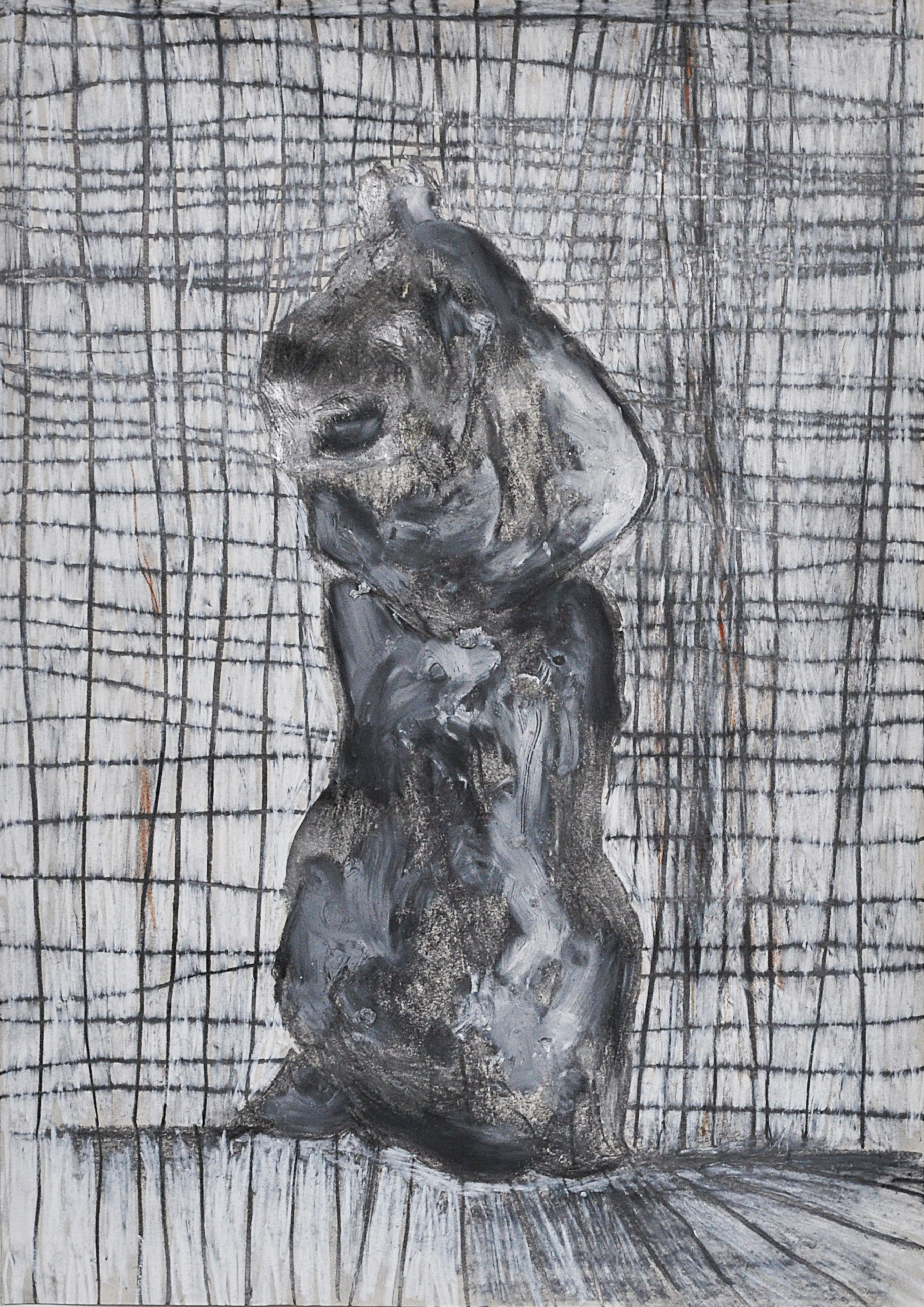

Cougard, 2019
1120 x 1600 mm
Acrylic, oil sticks, pastels on canevas
She burns like the sun, 2019
2000 x 2000 mm
Acrylic, oil sticks, charcoal on canevas
Body of work produced during two months of Residency at PADA in Barreiro, Lisbon.
Painting photographed in an abandoned paint factory at C.U.F Industrial Park.
1120 x 1600 mm
Acrylic, oil sticks, pastels on canevas
She burns like the sun, 2019
2000 x 2000 mm
Acrylic, oil sticks, charcoal on canevas
Body of work produced during two months of Residency at PADA in Barreiro, Lisbon.
Painting photographed in an abandoned paint factory at C.U.F Industrial Park.




